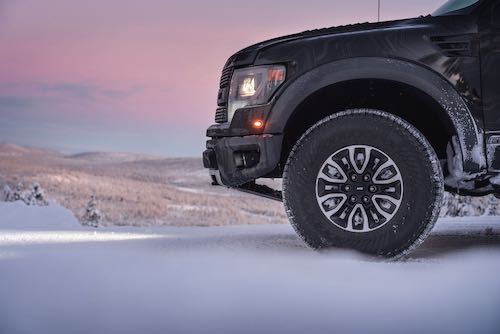There is no doubt that dedicated winter tires both studded winter tires and non-studded winter tires give the best performance when driving during severe winter conditions. This is because the specialized tread and rubber compound isn’t a compromise, like that of all-weather tires that have to cater for both summer and winter. Winter tires are optimized for snow, slush and ice along with freezing temperatures and then when that weather and season has passed it is time to change to all-season tires that have been optimized for dry or wet tarmac in warm temperatures.
With winter tires or snow tires, you have two different options. You have studded tires, and you have non-studded winter tires. The studded tires also give additional grip which comes in handy on ice. Each State in the United States and Provinces in Canada have different laws in regard to winter tires so it’s important to look into the laws concerning the state where you live.
Depending on where you live there will also be a difference for when to change into winter tires as in some states winter starts as early as October. Keep in mind that the general indications for winter tires is when the temperature drops near 45 degrees Fahrenheit. This is as the special rubber compound of winter tires are able to stay soft even in cold weather. What about the studded tires? Well, basically there are some States or Provinces that only allow rubber studs while others allow both metal and rubber studs so once again it’s important to be aware of the laws in the State where you live. Winter tires will improve traction, braking and handling, with today’s winter tires not being designed to perform just in snowy conditions, but perform better on cold, dry pavement as well. The big drawback with winter tires however is the need to change tires once the winter season is over. This is because the winter tires are not made to be used in other seasons but winter and in some States, it is even illegal, especially for studded tires.
When equipping your car with winter tires, it is important that winter tires are installed in sets of four to help maintain control and stability of your vehicle. Whether you invest in studded or non-studded tires, you will be able to handle the toughest of winter conditions and if you live in an area with severe winters you will not be disappointed in their performance? If you are not willing to change over to winter tires in the winter, then all-weather tires can be considered as they also hold the severe service emblem signifying their use in severe winter conditions. If the area where you live has mild winters, then maybe even an all-weather tire would suffice. As mentioned they are a compromise when it comes to performance, but you have the added safety of always having tires that can cope with the weather conditions that you will face when driving during the year.
For more information regarding winter tires, visit: https://www.nokiantires.com
